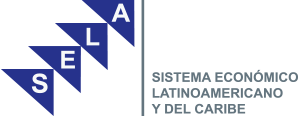INFLATION: CAN IT HAPPEN IN US? (ANALYSIS)
27 enero 2011
Fuente: Published by Seeking Alpha – Google News
Fuente: Published by Seeking Alpha – Google News
Washington, January 27- The Fed announced that it would continue purchasing Treasuries for its second round of quantitative easing (QE2). The news wasn't a surprise, but yesterday's FOMC statement triggered fresh talk about inflation.
But if there's a higher risk, it's not showing up in the implied forecast via the yield spread on nominal less inflation-indexed 10-year Treasuries.
As of yesterday, the market's inflation outlook is 2.29%, or roughly in the range of the past month. The low-2% forecast is in line with the market's prediction that prevailed before the autumn financial crisis of 2008 ushered in a deflation scare. The low-2% prediction is also the level of last spring, just ahead of the summer anxiety that spread fear that a new recession was brewing.
But thanks in part to expectations that the central bank would stabilize inflation expectations via QE2, the outlook for prices has rebounded to what some might call "normal" altitudes.
That doesn't appease critics, who worry that inflation pressures are building. Exhibit A in this view is the rise in commodity prices overall. The iPath Dow Jones-UBS Commodity ETN (DEP), for instance, a proxy for a broad mix of raw materials prices, has been climbing steadily since last summer.
The difference in yield between 2- and 30-year Treasuries widened for the first time in four days on concern inflation expectations may be on the rise due to prolonged monetary accommodation. It reached 3.96 percentage points.
“The longer part of the curve is moving up, suggesting that people may be rethinking inflation expectations and whether the Fed overshoots on its inflation target, given their monetary stance,” said Christopher Sullivan, who oversees $1.6 billion as chief investment officer at United Nations Federal Credit Union in New York.
Rising commodity prices, assuming they continue to rise, could force the Fed to moderate or even end QE2. But not yet. Unemployment remains stuck at elevated levels (9%-plus) and job growth is still sluggish. Until there are signs of improvement in the labor market, the Fed isn't likely to rethink the current path of monetary policy.
The next big opportunity for changing the crowd's sentiment on jobs arrives next week (February 4), with the update on nonfarm payrolls. The last employment report revealed a modest pace in job growth. Will the next one bring better news? Perhaps, as a new survey of economists advises: "Employers will hire more workers this year, and the economy will grow faster than envisioned three months ago, according to an Associated Press survey that found growing optimism among leading economists”.
But there's plenty of skepticism about the future path for employment. That includes the new Budget and Economic Outlook released yesterday by the Congressional Budget Office. The CBO's current projection for the labor market is tepid, at best. Unemployment will fall only slightly, to 9.2% by the fourth quarter of this year, CBO predicts. By the end of 2012, the jobless rate will drop only to 8.2%, the report continues.
Do economists know something that CBO policymakers don't? Until we receive more clarity on an answer, the Fed's going to have plenty of cover for keeping interest rates low. Whether that fuels inflation is debatable. Meantime, the risk of stagflation hangs in the balance. That risk may be descending on Britain.
The question du jour: Can it happen here?








